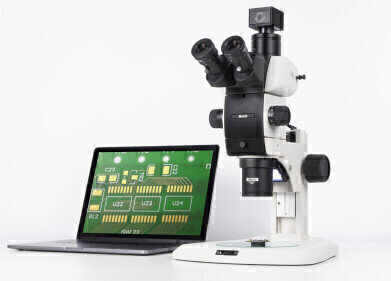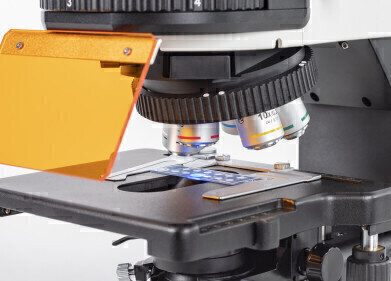Laboratory microscope
A world of applications - a world of microscopes
Nov 02 2021
The light microscope is an underestimated scientific instrument. Why?
Firstly, the history of this instrument is quite long. The beginnings can be traced back to the 17th century. Secondly, the complexity of this two-stage magnification system with visible light as a probe is manageable. Thirdly, access to microscopic work is easy: even children are able to handle it.
Microscopes are often hidden in the background of daily life. Maybe not in the medical field, but in quality control of the food industry, for example. From which continent this honey comes from? How is the reproduction rate of our yeast? And after the beer has been consumed, the sewage treatment plant has to do an important job.
When it comes to unlively materials, please think about the plastic wrap in your kitchen, made of several layers. Fibers are in focus when we talk about the production of fabrics.
No need to mention the infinite applications done in the medical field. Blood samples are checked for parasites. You just need a microscope from Motics BA or Panthera Series with a superior 100X lens. You are intending to use Fluorescence for Malaria detection? Add the respective LED Fluorescence module to these models.
Do you like sweet sandwich spreads for breakfast? From which continent does this honey come from? Motic´s BA210LED gives an insight. In transmitted light, the pollen grains within the honey clearly indicate its origin. Please note: An astonishing share of honey comes from Central America.
Breweries need a 600X total magnification to check the dosed yeast cells. Phase Contrast is needed, Darkfield is appreciated by some users. Just add a 40X Phase objective and 15X eyepieces. Et voilà, the total magnification needed is ready.
In the end, your beer meets the local treatment plant. Each cleaning step has to be controlled by a microscope; the active single-celled organisms have to be determined and counted.
Upgrading all these setups with a powerful Moticam S camera is more than easy. No matter if it is about sensitivity, speed (global shutter), or sensor size (up to 1“).
Plastic wrap for your kitchen is composed of several layers. After microtome sectioning, upgrade your microscope with Polarization Contrast for a better visual separation of the diverse layers.
BA and Panthera microscopes are established for years. As well as Motic‘s Inverted Microscopes from the AE series: work-horses for microbiology, ready for Petri dishes, flasks, and well plates.
In 2021 a new generation comes up: The PA53 microscopes target the expert level, high-end machines clearly superior in all aspects of performance. The focus is on semi-automatic Fluorescence in medicine and on quantification of reflective surfaces in industrial quality control. It is worth looking for a tailor-made solution for your individual task.
This expert line also includes an Apochromatic stereo microscope: the SM7. Color fidelity is ensured in the quality control of fibers. A tailored suit worn with a mechanical watch from Switzerland: An outfit which is not possible without the contribution of a powerful stereo microscope.
Digital Edition
Lab Asia 32.2 April
April 2025
Chromatography Articles - Effects of small deviations in flow rate on GPC/SEC results Mass Spectrometry & Spectroscopy Articles - Waiting for the present to catch up to the future: A bette...
View all digital editions
Events
Apr 09 2025 Tokyo, Japan
Apr 22 2025 Hammamet, Tunisia
Apr 22 2025 Kintex, South Korea
Analytica Anacon India & IndiaLabExpo
Apr 23 2025 Mumbai, India
Apr 23 2025 Moscow, Russia








-(3).jpg)















